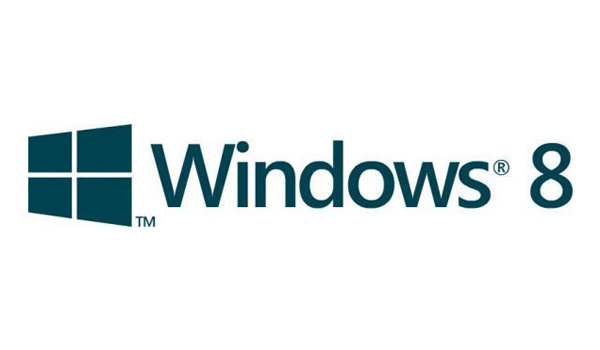Hi :!
Depuis le 17/09/2012, nous avons la chance de pouvoir retrouver auprès de votre centre d’exam (Prometric), la certification: 70-687 Microsoft Configuration Windows 8

Au programme nous pouvons retrouver:
Install and Upgrade to Windows 8 (14%)
- Evaluate hardware readiness and compatibility.
- This objective may include but is not limited to: determine whether 32 bit or 64 bit is appropriate; determine screen resolution; choose between an upgrade or a clean installation; determine which SKU to install
- Install Windows 8.
- This objective may include but is not limited to: install as Windows to Go; migrate from Windows XP or Windows Vista; upgrade from Windows 7 to Windows 8 or from one edition of Windows 8 to another edition of Windows 8; install VHD
- Migrate and configure user data.
- This objective may include but is not limited to: migrate user profiles; configure folder redirection; configure profiles
Configure Hardware and Applications (16%)
- Configure devices and device drivers.
- This objective may include but is not limited to: install, update, disable, and roll back drivers; resolve driver issues; configure driver settings
- Install and configure desktop applications.
- This objective may include but is not limited to: set compatibility mode; install and repair applications by using Windows Installer; configure default program settings; modify file associations; manage App-V applications
- Install and configure Windows Store applications.
- This objective may include but is not limited to: install, reinstall, and update Metro applications; restrict Windows Store content; add internal content (side loading); disable Windows Store
- Control access to local hardware and applications.
- This objective may include but is not limited to: configure AppLocker; configure access through Group Policy or local security policy; manage installation of removable devices
- Configure Internet Explorer.
- This objective may include but is not limited to: configure compatibility view; configure security settings; manage add-ons; configure websockets; configure Download Manager
- Configure Hyper-V.
- This objective may include but is not limited to: create and configure virtual machines; create and manage snapshots; create and configure virtual switches; create and configure virtual disks
Configure Network Connectivity (15%)
- Configure IP settings.
- This objective may include but is not limited to: configure name resolution; connect to a network; configure network locations; resolve connectivity issues
- Configure networking settings.
- This objective may include but is not limited to: connect to a wireless network; manage preferred wireless networks; configure network adapters; configure location-aware printing
- Configure and maintain network security.
- This objective may include but is not limited to: configure Windows Firewall; configure Windows Firewall with Advanced Security; configure connection security rules (IPSec); configure authenticated exceptions; configure network discovery; manage wireless security
- Configure remote management.
- This objective may include but is not limited to: choose the appropriate remote management tools; configure remote management settings; modify settings remotely by using MMCs or Windows PowerShell
Configure Access to Resources (14%)
- Configure shared resources.
- This objective may include but is not limited to: configure shared folder permissions; configure HomeGroup settings; configure file libraries; configure shared printers; set up and configure SkyDrive; configure Near Field Communication (NFC)
- Configure file and folder access.
- This objective may include but is not limited to: encrypt files and folders by using EFS; configure NTFS permissions; configure disk quotas; configure object access auditing
- Configure local security settings.
- This objective may include but is not limited to: configure local security policy; configure User Account Control (UAC) behavior; configure Secure Boot; configure SmartScreen filter
- Configure authentication and authorization.
- This objective may include but is not limited to: configure rights; manage credentials; manage certificates; configure smart cards; configure biometrics; configure picture password; configure PIN; set up and configure Windows Live ID
Configure Remote Access and Mobility (14%)
- Configure remote connections.
- This objective may include but is not limited to: configure remote authentication; configure Remote Desktop settings; establish VPN connections and authentication; enable VPN reconnect; manage broadband connections
- Configure mobility options.
- This objective may include but is not limited to: configure offline file policies; configure power policies; configure Windows to Go; configure sync options; configure WiFi direct
- Configure security for mobile devices.
- This objective may include but is not limited to: configure BitLocker and BitLocker To Go policies; configure startup key storage; configure remote wipe; configure location settings (GPS)
Monitor and Maintain Windows Clients (13%)
- Configure and manage updates.
- This objective may include but is not limited to: configure update settings; configure Windows Update policies; manage update history; roll back updates; update Metro applications
- Manage local storage.
- This objective may include but is not limited to: manage disk volumes; manage file system fragmentation; manage storage spaces
- Monitor system performance.
- This objective may include but is not limited to: configure and analyze event logs; configure event subscriptions; configure Task Manager; monitor system resources; optimize networking performance; optimize the desktop environment; configure indexing options
Configure Backup and Recovery Options (14%)
- Configure backup.
- This objective may include but is not limited to: create a system recovery disk; back up files, folders, and full system; schedule backups
- Configure system recovery options.
- This objective may include but is not limited to: configure system restore; determine when to choose last known good configuration; perform a complete restore; perform a driver rollback; perform a push button refresh or reset; configure startup settings
- Configure file recovery options.
- This objective may include but is not limited to: configure file restore points; restore previous versions of files and folders; configure File History
Lien Officiel: http://www.microsoft.com/learning/en/us/exam.aspx?id=70-687&Locale=en-us#tab1


